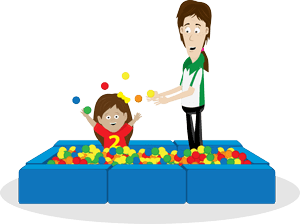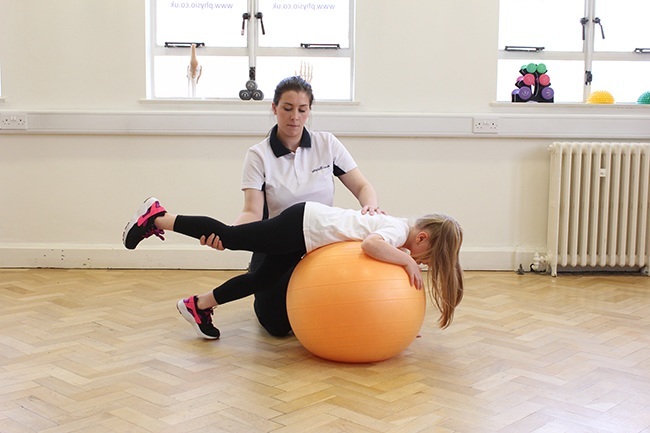
Sensory Integration Therapy
Sensory Integration is a therapy approach that aims to enable children to internalise and regulate their sensory responses to the environment around them. Every activity we do requires a high tech calibration of our senses. For with poor integration of touch and proprioception (the perception of limbs in space), we struggle to identify the correct weight of an object or the correct amount of pressure needed when completing tasks such as holding objects, writing or drawing. Poor sensory integration can have a dramatic effect on a child's handwriting, ability to do up buttons and zips or complete physical activities such as jumping/skipping.
Sensory integration therapy uses activities to create or reinforce the connections between the body's sensory system (such as the skin, nerves and hairs) and the brain. Some children do not correctly develop sensory processing (or integration) through normal development, and therefore will require therapy to enable them to reach these important developmental stages. As required by the College of Occupational Therapists, all Sensory integration practitioners must be fully qualified and trained in sensory integration, ranging from the first level of training to the fourth tier (in which therapists must complete a PhD and research project in sensory integration)
Problems that may require Sensory Integration therapy:
Below is a list of some of the common issues that may require sensory integration therapy:
Sensory seeking behaviour
- Swinging/Spinning
- Jumping/throwing themselves around
- Purposely hitting themselves against objects
- Screaming/shouting/ making lots of noise
Sensory avoidance
- Seeks quiet corners
- Unlikely to engage in loud activities
- Finds noisy/bright/smelly environments overwhelming
- Doesn't have many friends
Other Problems include
- Poor balance
- Motor difficulties
- Different response to playground activities as other children
Suitable conditions
Some of the suitable conditions for sensory integration therapy are:
- Acquired brain/head injury or trauma
- Autism
- Asperger's
- Attention Deficit Disorders (ADD)
- Dyspraxia
- Developmental Coordination Disorder(DCD)
- Learning Difficulties
- Regulatory and mood Disorders
- Sensory Processing Disorder
Benefits of Sensory Integration:
- Sensory Integration offers an explanation behind your child's behaviours
- Understand why your child may be acting out/throwing tantrums frequently
- Improved sensory processing and integration and therefore improved functional task ability
- Improved concentration
- Improved balance and motor skills
- Social improvements
Summary
In summary Sensory Integration is a therapy approach that aims to enable children to internalise and regulate their sensory responses to the environment around them. Every activity we do requires a high tech calibration of our senses. An occupational therapist can improve your child's ability to regulate their senses; this is done through an array of treatment options that will ultimately improve function.
If you feel that the child is sensory seeking or sensory avoiding, or you are concerned about the development of a child, please email office@otforkids.co.uk or call us on 0330 223 0888

 Next steps:
Next steps:Please contact one of our experienced occupational therapists today and we will gladly discuss how we can help and what services we can offer you.
- 0330 223 0888
- office@otforkids.co.uk
- 2 Hagley Rd, Salford M5 3EY [map]







 OT for Kids have been a great help in aiding my son Jake with coping with his dyspraxia both at home and in school. They came out to our house and completed the assessment at home.
OT for Kids have been a great help in aiding my son Jake with coping with his dyspraxia both at home and in school. They came out to our house and completed the assessment at home.






